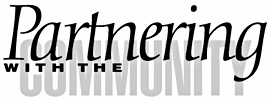


That fact, coupled with a solid reputation for fast, professional service, has turned UB's South Campus Instrument Center, which also works with university faculty and student researchers, into a critical "partner" with some 60 local companies.
Based in Squire Hall, the instrument center features state-of-the-art equipment, including image analysis systems, scanning electron microscopes with energy-dispersive X-ray capabilities, electron spectroscopy for chemical analysis (ESCA), Auger surface spectroscopy and optical microscopes equipped with digitizers for image analysis.
Customers range from dental companies, such as Ivoclar, Inc., to iimak, which uses the center to analyze ribbons for computer printers.
Vishay Thin Film, formerly Ohmtek, of Niagara Falls, is the center's oldest corporate client, having worked with the center for the past 12 years.
Initially, the company, which makes thin films for microelectronics applications, used the center for failure analysis of its thin films. But over the years, that relationship has broadened to include testing for quality control and for research on new products.
"We really have no reason to deal with any other testing labs for the services the UB center provides," said David Schmitz, quality assurance manager at Vishay Thin Film.
Not only does Vishay's thin film division use the center, but results have been so positive that the center now counts among its clients divisions of Vishay that are located outside of Western New York and even New York State.
Schmitz said that even in the isolated cases where the center cannot provide an answer or a specific expertise, staff at the center can identify who in the university can solve the problem.
"The university is a wonderful resource," Schmitz added.
Recently, he noted, Vishay staff needed to make a presentation to an aircraft subcontractor regarding a part Vishay Thin Film was producing on a contract for a major aircraft manufacturer. The center was involved in the testing and analysis of the part.
Peter Bush, who runs the center, attended the meeting to help present some of the technical information to the customer.
"The attendees were very impressed," said Schmitz. "His presentation was objective and authoritative."
In at least one instance where one of Vishay's vendors saw the work the center had performed, it, too, developed a working relationship with the UB center, even though the company was located out of state.
Schmitz noted that his company's re lationship with UB's instrument center allows it to take advantage of state-of-the-art equipment.
"Businesses like ours could never afford some of these instruments," he said.
At the same time, he said, the objectivity of the center staff and their willingness to trouble-shoot to help companies avoid future problems with materials makes the partnership invaluable.
"We take it as part of the university's public service mission to work with these companies," he said.
Service fees paid by companies help support and maintain the center's instruments.
According to Bush, the center does not duplicate other services available from private testing labs in Western New York.
Bush, four full-time staff members and several graduate students operate the center.
"I have often praised the staff for their ability to step into our shoes, to act like employees of our company," said Schmitz. "We're very proud of this handshake we have with the university."
Companies interested in working with the center should contact Peter Bush at 829-3561. The instrument center's web page is at http:/wings.buffalo.edu/faculty/research/scic/.